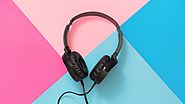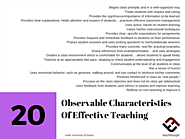-
About
- About Listly
- Community & Support
- Howto
- Chrome Extension
- Bookmarklet
- WordPress Plugin
- Listly Premium
- Privacy
- Terms
- DMCA Copyright
- © 2010-2025 Boomy Labs


 SAE Australia
SAE Australia
Listly by SAE Australia
A place to share teaching resources of particular interest and value to SAE academic staff. Items added to this collection should explicitly relate to creative media tertiary educators and/or the institutional context. Please give some thought to how other teachers may put your resource to use and ensure that the value and application of the resources added are reflected in the resource description.

Relevant and timely, these educator-created series offer insights into the tech, politics, sociology, and pedagogy affecting teachers today. As teaching evolves alongside our changing political, social, and demographic landscape, educators are increasingly seeking resources to help them keep current on the latest issues and ideas shaping their profession. This can be challenging, given educators’ rigorous schedules, so podcasts—which require the attention of only one of the body’s five senses—provide a perfect solution. You can listen to podcasts whenever you have a few free minutes, such as during your morning commute or while waiting for students to attend office hours.

The University of Minnesota offered some observable characteristics of effective teaching which, while focused on teacher actions rather than student learning, had some useful tips–not so much how to teach generally, but specific actions that you can use tomorrow.

A mispronounced or forgotten name can have a lasting impact on students on how they feel about school. Teachers provide tips on how to make those names stick.

Many instructors putting together a teaching portfolio for tenure or promotion find themselves stumped by this question. Maybe you are still relatively new to teaching. Maybe your approach is part personal experience as a former student, part trial and error. Maybe you have found your groove, but you never actually spent any time pondering about…

As a practicum student at McGill’s Teaching and Learning Services, I have been examining the role of reflective journals in post-secondary classrooms. Throughout the course of my research, it has come to my attention that, while they are used frequently in the instruction of disciplines like English and Theatre, reflective journals can actually be a…

community of humanists, artists, social scientists, scientists, and technologists changing the way we teach and learn. Our 16,000+ members from over 400+ affiliate organizations share ideas, news, tools, research, insights, pedagogy, methods, and projects--including Digital Humanities and other born-digital scholarship--and collaborate on various HASTAC initiatives.

Welcome to Enhancing Student Wellbeing – a suite of resources to assist university educators to develop policies, curriculum and teaching and learning environments that better support student mental health. The growing prevalence and severity of mental health difficulties across student populations in higher education is an issue of significant concern for universities. This project supports sector-wide conversations, a whole-of-institution approach and pedagogical innovations that promote mental health and wellbeing, enabling all students to realise their academic potential.

Giving one-day speeches at schools has taught me a lot about building rapport with students. Here are my top four techniques.

This playbook is an evolving collection of learning-centred activities to support teaching and learning practice. These activities can be useful when designing your lessons to support active student learning and student engagement.

This channel is part of the SAE Learning and Teaching Matrix — an online professional development portal and learning community designed to promote and support excellence in education at SAE Creative Media Institute.

This website collects the results of a AHRC funded research network that run between September 2012 and December 2014. The network aimed to create a platform for discussion between academics, practitioners, artists, cultural organisations, business development managers and other university directors, about knowledge connections and collaboration between universities and the creative and cultural sector.

Blogging can improve students’ writing skills and build their confidence as writers. By blogging, students can take ownership of their writing, become better observers of others’ writing, and develop a more immediate and powerful understanding of audience. Blogs encourage experimenting and risk-taking, seriousness and play, and they foster an increased awareness of private and public writing. Blogging blends both the freeing aspect of short pieces that can be written in a relatively low-stakes environment with the sense of claiming one’s own voice and learning how to develop analysis and articulate ideas to a larger public. Guided by clear expectations of what is required in a class blog, students can see their writing develop over the course of the term. This handout describes strategies for using blogs as a writing tool in the classroom.

Blogging Beyond the Classroom is an online forum for exchanging ideas and swapping experiences of learning and teaching with blogging and other social media. It aims to help students & teachers in HE explore blogging as a learning & communication tool. Helen Rogers set up the site with the support of a Teaching Development Grant from the Higher Education Academy.

By Professor Andrew Martin MAPS, Faculty of Education and Social Work, University of Sydney (from 2014: School of Education, University of New South Wales)
Many factors and processes operate in the classroom to affect academic learning. These factors and processes can be broadly categorised into two groups: will and skill (Covington, 1992). ‘Will’ refers to student motivation, while ‘skill’ refers to the knowledge and competencies centrally relevant to performing academic tasks. Research and theory generally confirm that will precedes skill; that is, motivation represents the inner drive and activity that provides the impetus, energy and direction required to develop and sustain one’s knowledge and competence.
In addition to this inner drive, research and theory show that external influences play an important role in the development of will and skill. Major external influences include parents/caregivers, peers, counsellors/psychologists and teachers. Of these, much research suggests it is the teacher (via instruction) who perhaps plays the greatest role in directly impacting both academic will and academic skill.

Students must believe they can learn, including that they can overcome and learn from failure. Giving students some control over learning processes helps develop this confidence and commitment to learning.

A student’s critical thinking skills can be strengthened when an instructor probes the student’s viewpoint on the discussion topic by seeking additional clarification, explanation, and justification from the student.

Quality teaching is widely acknowledge as being a key determinant of variation in student achievement (Wenglinsky, 2000). Concomitantly, stud...